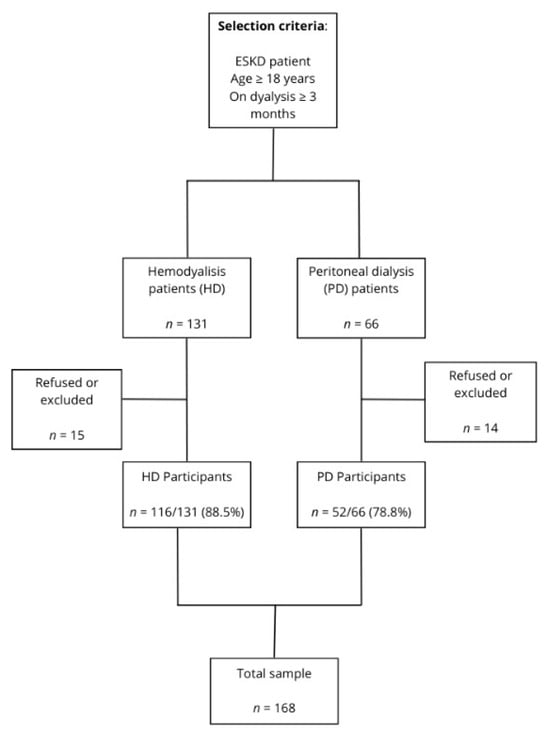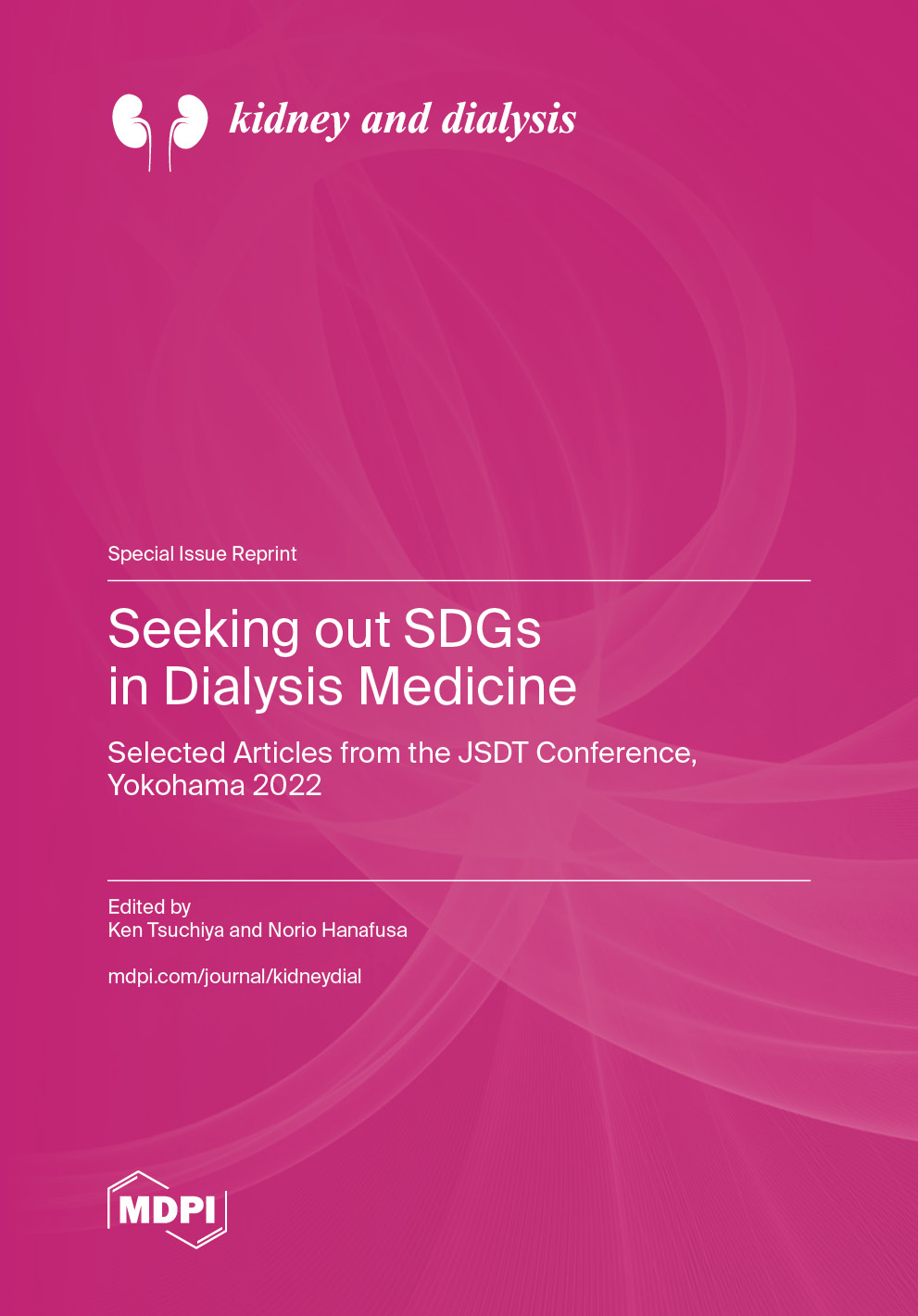- Article
Modality of Dialysis and Gastrointestinal Symptoms: A Cross-Sectional Study in Jordanian Adults
- Rami Dwairi,
- Khitam Al-Refu and
- Basil Aldiabat
- + 4 authors
Background: Gastrointestinal (GI) symptoms are highly prevalent in people receiving dialysis and contribute to malnutrition and poor quality of life. We examined the prevalence and severity of GI symptoms in Jordanian adults with end-stage kidney disease (ESKD) treated with hemodialysis (HD) or peritoneal dialysis (PD). Methods: In this cross-sectional study, consecutive adults with ESKD receiving maintenance HD at Al-Karak Teaching Hospital or PD at Al-Basheer Hospital were interviewed using the validated Arabic Gastrointestinal Symptom Rating Scale (GSRS). Domain and total scores (range 1–7) were compared between modalities; a GSRS total score ≥3 defined at least mild overall GI symptom burden. Results: Among 168 ESKD participants (mean age 43.4 ± 15.3 years; 116 HD, 52 PD), 92.2% reported at least one GI symptom. The prevalence of GSRS-defined symptoms was greater in PD (94.2%) than HD (91.4%). PD was associated with significantly higher mean scores in all GSRS domains (reflux, abdominal pain, indigestion, diarrhea, constipation) and a higher total GSRS score (3.33 ± 1.36 vs. 2.36 ± 0.71; p < 0.01 for all comparisons). Upper GI bleeding (UGIB) requiring hospitalization after dialysis initiation occurred more often in HD than PD (15.5% vs. 3.8%; OR 4.59; 95% CI 1.03–20.58). Conclusions: This study demonstrated that dialysis patients had a high prevalence of GI symptoms, with an elevated severity in patients on PD. These findings highlight the need for routine structured assessment of GI symptoms and modality-specific management strategies in dialysis units, particularly for patients on PD.
22 December 2025




